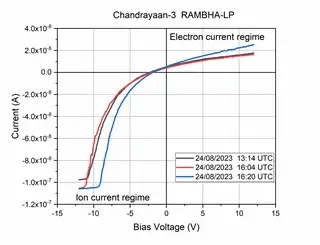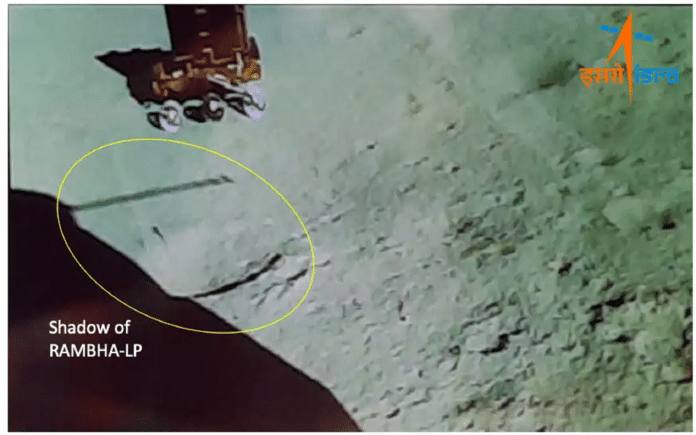Radio Anatomy of Moon Bound Hypersensitive ionosphere and Atmosphere – Langmuir Probe (RAMBHA-LP) payload onboard Chandrayaan-3 Lander conducted the first in-situ measurements of the surface-bound Lunar plasma environment over the south polar region. It measures near-surface plasma content.
According to the preliminary analysis, the plasma surrounding the lunar surface is quite sparse, with a number density of between 5 and 30 million electrons per cubic meter. The lunar daytime just before sunrise is the focus of this evaluation.
The Probe keeps running nonstop to investigate changes in the near-surface plasma environment over a lunar day. These ongoing observations will significantly impact understanding of the charging process in the lunar near-surface region, especially in response to changes in solar space weather conditions.

A Langmuir probe (named after Irving Langmuir) is a tool used to characterize plasma. It consists of a 1-meter boom linked to the upper deck of the Chandrayaan-3 Lander and a 5-cm metallic spherical probe. After the lander touches the moon, a hold-release mechanism is used to deploy the search. The spherical probe is kept separate from the lander’s body and functions within the unaltered lunar plasma environment thanks to the longer boom length.
The system has a dwell time of one millisecond and can detect tiny return currents as low as picoamperes. The device can precisely calculate ion and electron densities and their energies based on the recorded return current by applying a sweeping bias potential ranging from -12 to +12 V in steps of 0.1 V to the Langmuir probe.
